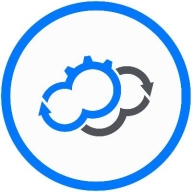

CloudStack and Cloudify are competing products in the realm of cloud management platforms. cloudify seems to have the upper hand due to its advanced orchestration capabilities and flexibility, though CloudStack is preferred for its cost-effectiveness and supportive community.
Features: CloudStack offers extensive API support, a robust virtualization framework integrating with various hypervisors, and compatibility with diverse infrastructure environments. Cloudify provides comprehensive orchestration capabilities, model-driven deployment, and multi-cloud management, enhancing automation across diverse environments.
Room for Improvement: CloudStack could benefit from enhanced orchestration features, improved user interface customization, and more enterprise-level support options. Cloudify could improve by simplifying its deployment model, increasing community support resources, and reducing initial setup complexity.
Ease of Deployment and Customer Service: CloudStack offers straightforward deployment with vast community and documentation support, focusing on quicker installation and simplicity. Cloudify's blueprint-driven deployment offers flexibility but may add complexity, with dedicated enterprise support enhancing customer service.
Pricing and ROI: CloudStack is budget-friendly with lower setup costs and boosted ROI due to its open-source nature and active community, offering value with minimal expenses. Cloudify demands higher initial costs but justifies investment with significant ROI through enhanced efficiencies and superior orchestration features.
| Product | Market Share (%) |
|---|---|
| CloudStack | 4.0% |
| Cloudify | 1.8% |
| Other | 94.2% |


| Company Size | Count |
|---|---|
| Small Business | 3 |
| Large Enterprise | 6 |
| Company Size | Count |
|---|---|
| Small Business | 13 |
| Midsize Enterprise | 6 |
| Large Enterprise | 12 |
Cloudify is an open-source orchestration-first cloud management platform. The solution allows applications to efficiently run across multiple cloud or data center platforms for premium multi-cloud infrastructure automation and orchestration. It provides infrastructure automation using environment as a service (EaaS) technology to deploy and continuously manage any cloud, private data center, or Kubernetes service from one central point while leveraging existing toolchains.
Cloudify Product Highlights
Cloudify Features
Cloudify has many valuable key features. Some of the most useful ones include:
Cloudify Benefits
There are many benefits to implementing Cloudify. Some of the biggest advantages the solution offers include:
We monitor all Cloud Management reviews to prevent fraudulent reviews and keep review quality high. We do not post reviews by company employees or direct competitors. We validate each review for authenticity via cross-reference with LinkedIn, and personal follow-up with the reviewer when necessary.